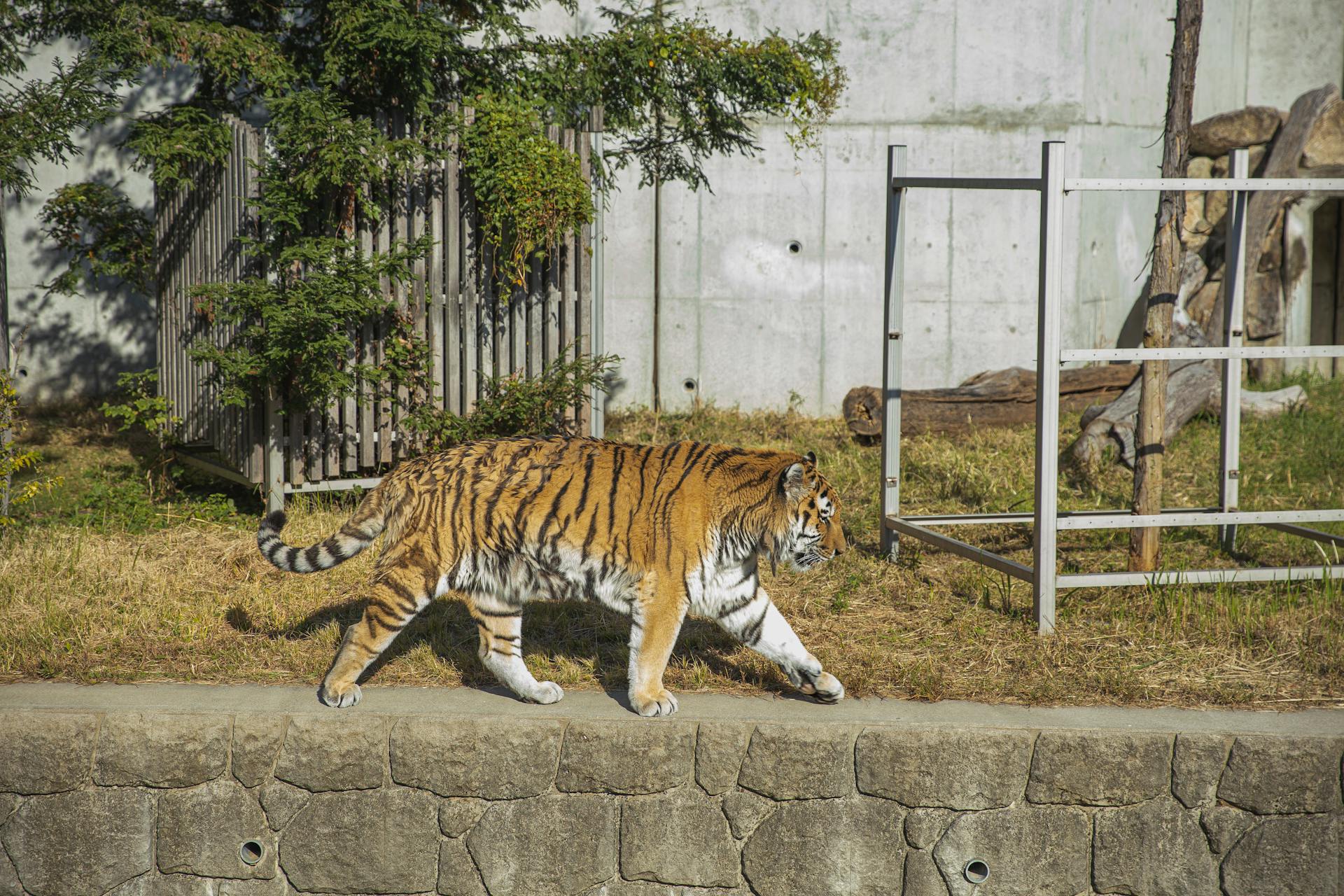
An animal sanctuary is a place of refuge for animals that are rescued from abusive or neglectful situations, or are given a place to live when their natural habitats can no longer sustain them. Animal sanctuaries provide a safe and humane environment where these vulnerable creatures may spend their final days in peace and contentment.
Prior to their entry into the sanctuary, most of the animals have been in the care of other rescue organizations who have carefully assessed their medical and behavioral needs. Animals must meet certain physical and psychological criteria before they can be admitted which is why sanctuaries require documentary proof such as vaccinations, prior medical check-ups and other deemed requirements regarding the animal’s health status. The main goals of animal sanctuaries are to rehabilitate animals and protect them from further injury or suffering.
Once fully healed, animals become long-term residents at animal sanctuaries where they can receive the specialized care needed to retain good physical and mental health. This includes providing nutritional meals tailored to each species’ dietary needs, enrichment activities such as playtime, proper veterinary visits for ongoing preventative care and access to nature in order for them to express their natural behaviors.
At most sanctuaries, visitors can observe these animals as they interact in peaceful environments with other species or engage in daily routines such as grazing or socializing with hay bales scattered around the outdoor enclosures. Your visit also provides financial support which helps ensure that all residents’ basic needs are met during their remaining time alive on this planet. So don’t hesitate to join one of these places where love between humans, nature, and animals collide!
A unique perspective: Old Friends Senior Dog Sanctuary
What is the difference between an animal sanctuary and a zoo?
Animal sanctuaries and zoos have numerous similarities in that both provide safe and secure refuges for wild animals. However, there are key differences between the two that set them apart from one another. Animal sanctuaries focus on long-term conservation and providing a natural habitat for their animals. They recognize that all creatures have a right to exist and strive towards maintaining the balance of nature by protecting those who may not be able to do so on their own. On the other hand, zoos are more focused on preserving species than providing housing for individual animal needs. Zoos typically exhibit some form of captivity in order to keep the animal under control while allowing visitors to observe the animal in its environment without endangering either it or itself.
Furthermore, many zoos actively breed their inhabitants, whereas animal sanctuaries strive to rescue animals from abuse, neglect or abandonment. Sanctuaries often refuse any form of breeding in an effort to minimize overcrowding. Melinda Slocombe, veteran sanctuary director at Tree House Humane Society (ThHS) in Illinois has stated that "Sanctuaries never buy, sell or trade animals – whereas most major zoos do so." Additionally, sanctuary environments tend to be much more naturalized than zoo habitats as they attempt to mimic a creature's native environment as closely as possible.
In conclusion, while both animal sanctuaries and zoos provide safe havens for creatures they differ in their overall goal: zoos exist primarily to display and protect species against extinction through successful breeding programs while sanctuaries offer a refuge with a focus on protection and preservation of individual wildlife against cruelty and mistreatment.
Take a look at this: Hud Assistance Animal Verification Form
What kind of animals can be found in an animal sanctuary?
Animal sanctuaries are amazing places devoted to protecting and caring for animals of all kinds. These treasured havens are home to a diverse array of species – from large mammals, to reptiles, birds and even primates!
At an animal sanctuary, you can find familiar creatures like dogs and cats who have been rescued from abusive or neglected homes or those previously kept as pets. Often, the sanctuary provides them with space to roam free in the open air, as well as giving them the love and attention they need for a happy life. But it’s not just furry friends that can be found in these places – many sanctuaries also provide shelter for wild animals such as deer, elk, coyotes and foxes. They will also often serve as a refuge for birds like peregrine falcons or rare hawks!
Reptiles like snakes or turtles may also make their home in a sanctuary. These are often welcomed in with kindness and given enclosures that mimic their natural habitats with plants and rocks. You’ll also find amphibians such as frogs at some sanctuaries – they make an ideal home amongst pond and wetland ecosystems members of the amphibian families may call home. Finally, primates can also be found in animal sanctuaries around the world – these courageous animals have suffered more than their share of suffering at the hands of humans who have captured them from their habitats or kept them captive in living conditions not fit for any animal to endure.
When visiting an animal sanctuary you may stumble upon all manner of animals that have found refuge here – many who now live out peaceful lives free from cruelty and neglect. It can provide an insightful look into the amount of variety our planet offers us when it comes down to its living inhabitants, one worth protecting for future generations.
For your interest: Bird Sanctuary Definition
How can I visit an animal sanctuary?
Visiting an animal sanctuary can be an incredibly rewarding experience, and provide an opportunity for you to experience the majesty of animals up close and personal! Here are a few tips to ensure that your trip is memorable and beneficial for both you and the animals:
First, you'll want to do some research and find a reputable sanctuary near you. Many sanctuaries receive funding from non-profit organizations, so be sure to do a background check on the organization offering the visit. Once you've chosen where you'd like to go, call them or go online and book a tour. Make sure that the environment at the sanctuary is suitable for visitors – some sanctuaries may place limits on visitors due to overcrowding.
Next, be mindful of your behavior while you’re visiting – it’s important not to disrupt the area or startle any of the animals. Have fun, but respect their environment and stay within designated areas; many sanctuaries also have rules about interacting with their animals, that must be adhered to at all times. Additionally, some will require you to bring items such as toiletries, blankets or other supplies for use during your visit.
Finally, don't forget about respecting the environment of the sanctuary; this includes keeping noise levels low, disposing of all trash properly (ideally recycle whenever possible!) and following all signage. Remember that these animals need our help! Taking care not to result in any deterioration of their habitat will help ensure future generations will have an opportunity to visit animal sanctuaries as well!
How do animal sanctuaries help protect endangered species?
Animals sanctuaries play a crucial role in protecting endangered species from wildlife exploitation and extinction. Through education, advocacy, and direct action, animal sanctuaries provide safe and secure habitats for endangered species. There is still much to be done for conservation efforts, but animal sanctuaries are essential for preserving biodiversity.
Within animal sanctuaries, wild animals can have the freedom to engage in natural behaviors without the threat of human interference or other dangers. This means that animals within these reserves are much less likely to be hunted by poachers; instead they can flourish under strict protection from protective measures like certain endangered species laws. By creating safe environments, they provide species--such as elephants, sea turtles, tigers, or rhinos--with a safe place to breed and live out their remaining days free of harm.
Animals Sanctuaries also raise awareness of the plight of endangered species and emphasize the importance of conservation efforts. They often run educational programs that allow visitors to learn more about these species and their unique needs in order to promote better understanding and support for conservation efforts. Animal sanctuaries also provide vital research facilities where scientists can study the mechanics behind this endangerment in order to devise new strategies to protect these vulnerable populations from further losses due to human activities such as poaching or habitat destruction.
Animal sanctuaries are essential for preserving biodiversity because they create spaces free of negative human influence where endangered animal populations can recover. With proper protection measures, like those offered in many animal sanctuaries around the world, it may become possible to reverse some damage done to our planet's most vulnerable animals--including on example is with important reintroduction projects such as rewilding programs in Greece recently which protect many rare animal species by restoring their native habitats and reintroducing them into protected areas.
What is the purpose of an animal sanctuary?
An animal sanctuary exists for one primary purpose: to provide a safe and secure home for animals who have been rescued from abuse, neglect, abandonment, or other dire circumstances. The aim of a sanctuary is to allow these animals to live out the rest of their lives in comfort and peace. Though not all sanctuaries are the same, they often become a second home for the animals they protect, providing humane and compassionate care while allowing the creatures to live in their natural environment as much as possible.
Beyond providing safety and security, the mission of many animal sanctuaries also focuses on education and advocacy. They understand that when visitors experience meaningful relationships with their animal friends at a sanctuary that these encounters can foster empathy, inspire scholarship opportunities and instill respect for our fellow species. By providing beneficial educational opportunities about issues impacting animals (such as climate change or species endangerment), sanctuaries can bring awareness to various issues within the global community.
Animal sanctuaries are invaluable places set aside to provide refuge for rescued animals in need. But taking it a step further, these sanctuaries are also capable of changing people’s lives by broadening our understanding of nature while bringing humans together in compassionate harmony with creatures who inhabit our limited world.
Are there any volunteer opportunities at animal sanctuaries?
Volunteering at an animal sanctuary can be a rewarding and meaningful experience. Not only do you get to work with some of the most wonderful animals on earth, but you also get to help fulfil the important mission of conserving wildlife and providing a safe haven for endangered species. A variety of different roles are available for volunteers at animal sanctuaries, from hands-on care for the animals to assisting with office duties and helping out with fundraising and awareness campaigns.
Each sanctuary varies in terms of what volunteer opportunities they have available, but some common roles include cleaning and animal maintenance, providing food and water for the animals, giving educational tours to visitors, helping conduct research studies, assisting with veterinary procedures and engaging with the community. If you're looking to learn more about what volunteering at an animal sanctuary looks like then make sure you do your research beforehand so that you are well prepared for the experience.
Animal sanctuaries provide amazing opportunities for volunteers looking to make a difference in their lives as well as in our environment. With plenty of roles available there is sure something to fit any interest or skill set so consider reaching out to a nearby sanctuary today to find out how you can help make their work possible.
Sources
- https://www.tripstodiscover.com/animal-sanctuaries-to-visit-in-the-u-s/
- https://opensanctuary.org/the-difference-between-an-animal-sanctuary-and-a-petting-zoo/
- https://www.treehugger.com/difference-between-zoo-and-sanctuary-127657
- https://opensanctuary.org/what-defines-an-animal-sanctuary/
- https://www.vetstreet.com/our-pet-experts/7-things-i-learned-about-starting-an-animal-sanctuary
- https://kids.nationalgeographic.com/nature/article/raise-awareness
Featured Images: pexels.com


